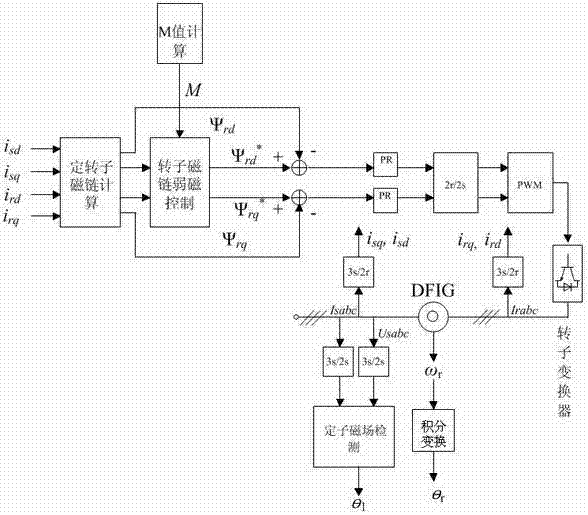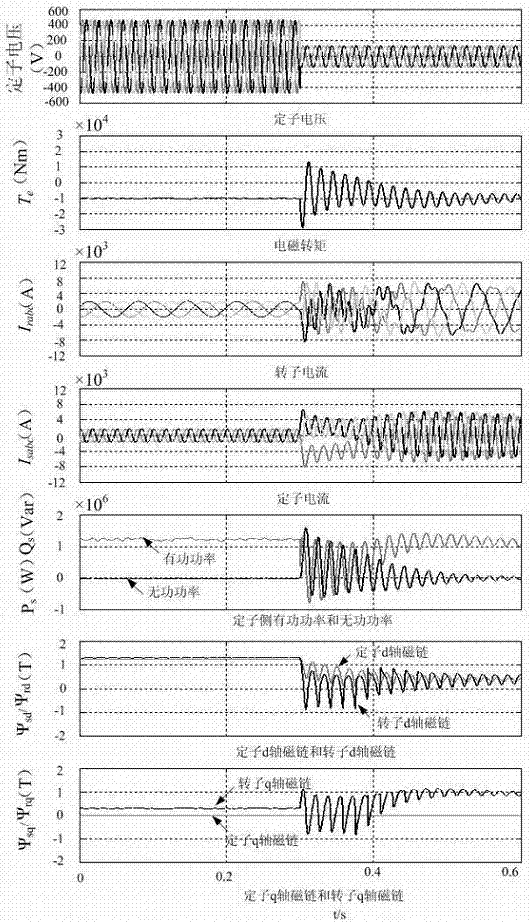Synchronous flux weakening control method for stator and rotor flux linkage of doubly-fed wind turbine under grid fault
A technology for wind turbines and power grid failures, applied in motor generator control, electronic commutation motor control, control generators, etc., can solve active power and reactive power fluctuations, increase hardware costs, grid transient electromagnetic impact wind power Machine mechanical shock and other problems
- Summary
- Abstract
- Description
- Claims
- Application Information
AI Technical Summary
Problems solved by technology
Method used
Image
Examples
Embodiment Construction
[0021] The present invention will be further described below in conjunction with the accompanying drawings. figure 1 two-phase stator αβ Stationary coordinate system, two-phase rotor speed ω r to rotate αr β r Coordinate system, two-phase synchronous speed ω e to rotate d q Coordinate System. The control method of the present invention is based on the two-phase synchronous rotating coordinate system, the variables on the stator side and the rotor side, after coordinate conversion, the two-phase synchronous rotation is obtained d q variables in the coordinate system.
[0022] When the stator side and the rotor side take the motor convention, the basic voltage equation of the doubly-fed generator in the two-phase synchronous rotating coordinate system is:
[0023] (1)
[0024] (2)
[0025] (3)
[0026] (4)
[0027] In the formula: u sd and u sq Respectively represent the stator voltage d axis and q axis component; u rd and u rq Respectively...
PUM
 Login to View More
Login to View More Abstract
Description
Claims
Application Information
 Login to View More
Login to View More - R&D
- Intellectual Property
- Life Sciences
- Materials
- Tech Scout
- Unparalleled Data Quality
- Higher Quality Content
- 60% Fewer Hallucinations
Browse by: Latest US Patents, China's latest patents, Technical Efficacy Thesaurus, Application Domain, Technology Topic, Popular Technical Reports.
© 2025 PatSnap. All rights reserved.Legal|Privacy policy|Modern Slavery Act Transparency Statement|Sitemap|About US| Contact US: help@patsnap.com



